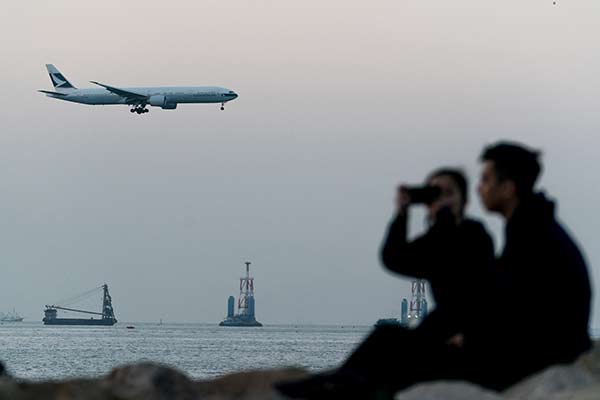Cathay Pacific sees Hong Kong retaining its edge as transit hub


Convenient transfer services and multiple connections to major business locations have helped Hong Kong to retain its edge as the premier transfer airport in the region, despite more direct flights between the Chinese mainland and foreign destinations, an aviation industry official said.
Diao Zhihui, general manager for the Chinese mainland at Cathay Pacific Airways Ltd, the flag carrier of Hong Kong, said business travelers still prefer Hong Kong due to the convenient transfer services and multiple flights to major business destinations like London, New York, Tokyo and Singapore. The flexible schedules of Cathay Pacific have helped boost work efficiencies of business class passengers and given Hong Kong an edge amid stiff competition, he said.
Explaining his claim, Diao said, Cathay Pacific operates six flights between Hong Kong and London daily, providing a number of choices for passengers, while most carriers on the Chinese mainland operate only one flight daily.
"In the past year, the passenger load factors of the first class and business class of Cathay Pacific have been growing well, and the growth rate is much higher than that of the economy class, meaning the Hong Kong airport is still attractive among high-end customers," he said.
"The growth has also benefited from the emergence of high-end tourism. The Chinese mainland market plays an important role for Cathay Pacific, and we are confident that the Chinese mainland market will continue to perform well."
The 72-year-old Cathay Pacific has been struggling with lackluster sales in recent years, in the face of intense market competition and a lukewarm Hong Kong economy.
In 2017, the airline reported a loss of HK$1.26 billion ($160.6 million), compared with a loss of HK$575 million in 2016. Last year, it set up a three-year company transformation plan, and since the second half of that year, the plan has started to work.
The group saw its profit reach HK$792 million in the second half, compared to a loss of HK$2.77 billion in the first half, according to its latest earnings report released last week.
The transformation plans include the launch of new flights with growth potential. For instance, in January, Cathay Pacific launched direct flights between Nanning, Guangxi Zhuang autonomous region, and Hong Kong. By the end of March, it plans to start direct flights between Jinan, Shandong province and Hong Kong.
In the next six years, the airline plans to receive six new A350-900 and 20 A350-1000 aircraft, which are believed to be more fuel-efficient and will support ultra-long routes.
Meanwhile, Diao said the Belt and Road Initiative has provided positive growth opportunities for Cathay Pacific. Now, the airline is seeing significant demand for its flights from Hong Kong to India, Sri Lanka and New Zealand.
Lin Zhijie, an aviation industry analyst and columnist at one of China's largest civil aviation web portals Carnoc, said Cathay Pacific's losses were a combination of several factors.
"The economic status of Hong Kong is going down in the Asia-Pacific region. Besides, a large number of airlines from the Chinese mainland have launched direct flights to Europe and the Americas," he said.




































